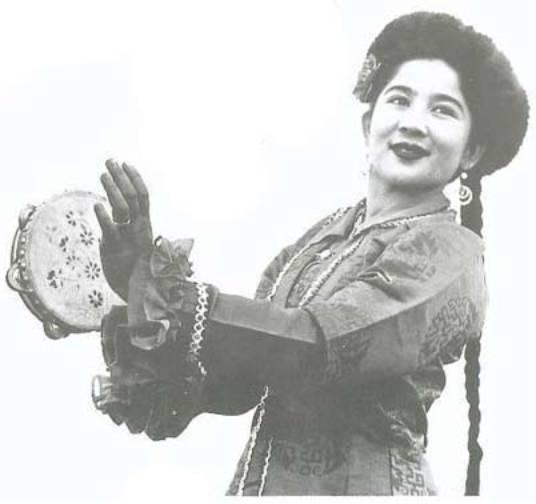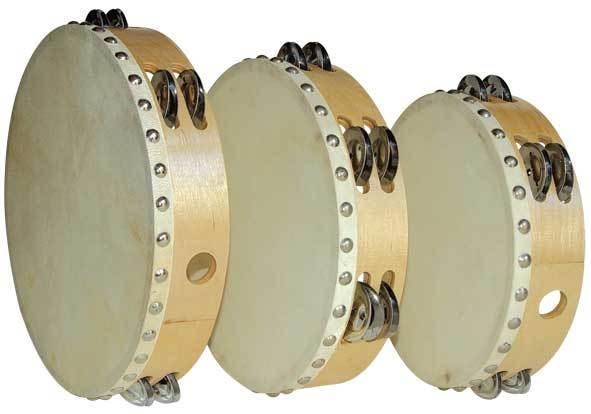Tambourine playing skills
1038 views · Organized by 阿轺 on 2022-02-14
Tambourine is also a kind of tambourine, so naturally all kinds of playing skills are related to palms and fingers. The tambourine is a fascinating instrument once you have mastered the basics. The tambourine is a fascinating instrument once you have mastered the basics. The basic skills of the tambourine can be divided into the following categories:Hit, Roll, Finger Roll, Thumb Roll, Wrist/Knee, etc. The use of the occasion is different, according to the volume, speed, timbre, etc. to be able to freely convert various skills Caixing. Before discussing several techniques, it is important to pay attention to the posture when holding the tambourine. Since the bell will shake and reverberate, maintaining the tambourine at a 45-degree angle will keep the bell not too short or too long.

Dotting
Usually, the tambourine is held and rolled with the left hand, and the rhythm is played with the right hand. From low voice to loud voice, basically use the front end of the index finger, middle finger, and ring finger to hit, and the position of hitting is between the rim and the center of the drum. Closer to the middle (the drumhead is louder). When it gets louder, we can make a fist and hit with the flats in the first and second knuckles. It felt like knocking on the door. At this time, the sound will become louder, and the resonance sound of the drum head will also become louder.Finger Roll
Put your thumb under your middle finger to support the strength of your middle finger. During the round tone, push the fingers along the drum frame from bottom to top, and the contact position of the fingers is the middle of the fingertip and the pulp of the finger. Try a few times to master the moderate friction, and you can naturally practice. The Roll starts with a little bit of emphasis, like the snare and timpani rounds.Thumb Roll
Same as Finger Roll, just use the tip of your thumb instead. Both of these techniques are used by some people, so find the one you like and practice it well. Except for the thumb, the other four fingers move along the drum frame together (without touching it), so that the four fingers can quickly turn to the drum surface to stop the wheel sound when it stops.When fast and quiet
You can roll the towel into a long shape, turn the tambourine over and place it on the towel, and use the fingertips of both hands to hit the drum frame. At this time, the sound will be extremely small, and only the sound of the bell can be heard, not the sound of the drum surface. .When fast and loud
When one hand is too late to hit, we start to use the knee. The tambourine can be drum-side up or drum-side down, depending on personal preference. First make a fist with your hand, use the whole wrist to swing for the first time, and then hit the knee with the entire tambourine face down with your left hand. It should be noted that the place where the hand strikes and the place where the knee strikes is just across the drum surface. Symmetrical position. Adjust the angle of the tambourine slightly until the hands and knees produce the same tone. As for the left-footed chair, I think the drum chair for kids is a great fit, both in terms of size and adjustable height.

Involving musical instruments
Tambourine (Pinyin: líng gǔ) is a percussion instrument of Uyghur, Korean, Uzbek, Tajik and other ethnic groups. It is popular in Xinjiang Uygur Autonomous Region and Jilin Yanbian. The drum frame is made of wood and one-sided skin. There are three kinds of large, medium and small. . For singing and dancing or instrumental ensembles. Tambourine, also known as "hand drum", whether in folk dance or band accompaniment, tambourine is a kind of rhythm percussion instrument with strong color, which can be used as accompaniment, accompaniment dance and accompaniment song. The rhythm is free and the player can improvise.
Guess you like
Organized by 桑白 on 2022-02-14
Tambourine, also known as "hand drum", whether in folk dance or band accompaniment, tambourine is a kind of rhythm percussion instrument with strong color, which can be used as accompaniment, accompaniment dance and accompaniment song. The rhythm is free and the player can improvise.
read >>
 渝公网安备 50010702504639号
渝公网安备 50010702504639号